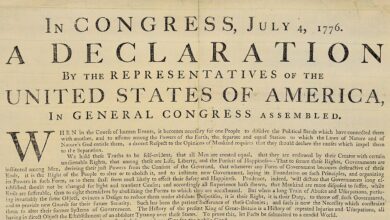Voters and Markets: Good News from Bolivia

It happened in Argentina, and now it is happening in Bolivia. Across Latin America, expelling the left from power brings optimism back to the markets. On August 17, Bolivians went to the polls and delivered a historic blow to Movimiento al Socialismo (MAS), the left-wing party that has governed Bolivia during 18 out of the past 19 years. Just a day after the election, bond prices increased by 5%, and the country’s Country Risk Index score fell by 20%, according to JP Morgan. This confirmed the upward trajectory bonds had shown, since they had already risen over 30% this year.
Rodrigo Paz, a centrist candidate who received 32% of the vote, and Jorge Quiroga, a former President and right-wing candidate with 27%, will face each other in the runoff on October 19. But what truly shocked observers was not just that the MAS candidate, Eduardo del Castillo, did not reach the second round; he barely made it to fourth place with only 3% of the vote, just the number of votes they needed for the party to survive. Another centrist candidate, Samuel Doria, took third place.
In this context, it is understandable that current President Luis Arce did not seek reelection. He knew beforehand that voters would repudiate him. Only former President Evo Morales (2006–2020) was bold enough to attempt another run, but the Constitutional Court barred him from seeking a new term. Morales started the vicious circle that has brought the Bolivian economy to its knees over the past two decades, but most of the negative consequences of statism were not experienced until he left office.
The current economic crisis in Bolivia, which has built up over the years, is just another example of the kind of ever-increasing public spending that continues even as revenues stop coming in. First, the Bolivian state nationalized natural resources and, above all, gas, which abounded. Then, it enjoyed high gas prices and spent generously. Finally, when gas prices fell, the system blew up. As there were no spending cuts and deficits soared, reserves fell, inflation appeared, and multiple exchange rates were put in place. Bolivia joined the same trajectory already seen in Venezuela with oil and, to some extent, in Argentina with soybeans.
At last, the public reacted. But the Bolivian reaction seems bolder than Argentina’s, where the left still received 44% of the vote in the 2023 runoff, or even Venezuela, where dictator Maduro is believed to have received about one third of the vote in the 2024 fraudulent election, according to the opposition’s count. At least across Latin America it is hard to find precedents of a party that, having dominated elections for almost 20 years, suddenly plunged to 3%.
Markets certainly welcome this result. Improving expectations are already making credit access easier for Bolivian companies. They may also enable higher investment during a future post-MAS administration, provided that it can stabilize the economy, uphold the rule of law, and respect private property. Nationalizations and capital controls have driven away investors in recent years, but without them it will be impossible for Bolivia to prosper.
It is usually said that markets like certainty. Curiously, though, the fact that centrist Paz is now the frontrunner was not forecast, as polls suggested that he would end up in third place. This means that all it took for investors to react positively to the first round was simply MAS’s exit from power, despite the remaining uncertainty about who will actually be President. The legislative results also reinforce the message: MAS, once dominant in the Bolivian Senate, will now have no Senators. In the House, MAS only won 15% of all seats.
None of this—the election, the knowledge of the two remaining candidates, or the reaction of voters—means that Bolivia’s crisis will be over anytime soon. Any future government will need the support of the public in what will certainly be difficult years of fiscal adjustment. According to the IMF, the deficit has recently hit 10% of GDP. Year-on-year inflation is higher than in Argentina, which is still recovering from near-hyperinflation. Bolivia, once a gas exporter, mismanaged the resource so badly that it now imports gas.
Can a right-wing President fix any of this? Can a centrist survive? Can they finally enact the reforms that Bolivia needs? Those are still open questions, whose answers also depend on international factors beyond anyone’s control. For the time being, voters and markets seem aligned. This may not be a sufficient condition, but it is definitely a necessary one.
The post Voters and Markets: Good News from Bolivia was first published by the Foundation for Economic Education, and is republished here with permission. Please support their efforts.



